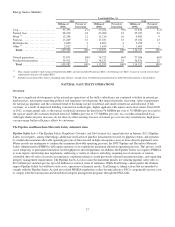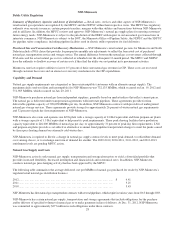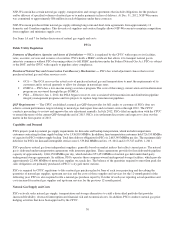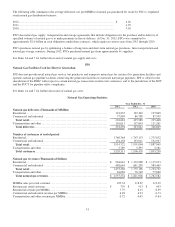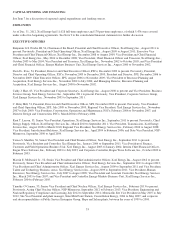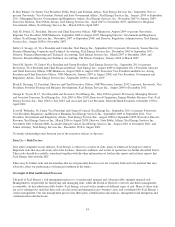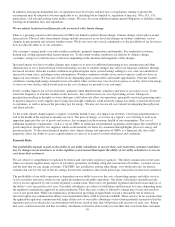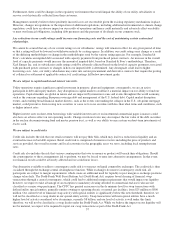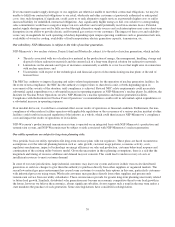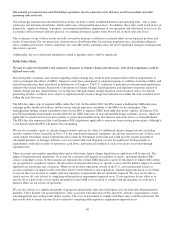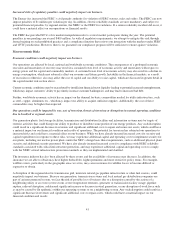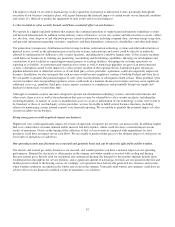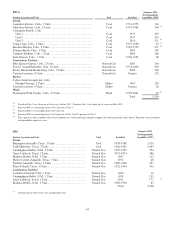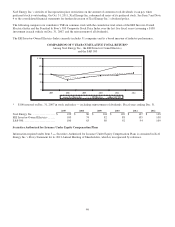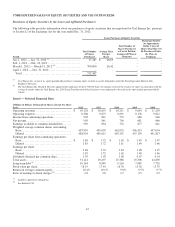Xcel Energy 2012 Annual Report Download - page 47
Download and view the complete annual report
Please find page 47 of the 2012 Xcel Energy annual report below. You can navigate through the pages in the report by either clicking on the pages listed below, or by using the keyword search tool below to find specific information within the annual report.37
Furthermore, there could be changes in the regulatory environment that would impair the ability of our utility subsidiaries to
recover costs historically collected from their customers.
Management currently believes these prudently incurred costs are recoverable given the existing regulatory mechanisms in place.
However, changes in regulations or the imposition of additional regulations, including additional environmental or climate change
regulation, could have an adverse impact on our results of operations and hence could materially and adversely affect our ability
to meet our financial obligations, including debt payments and the payment of dividends on our common stock.
Any reductions in our credit ratings could increase our financing costs and the cost of maintaining certain contractual
relationships.
We cannot be assured that any of our current ratings or our subsidiaries’ ratings will remain in effect for any given period of time
or that a rating will not be lowered or withdrawn entirely by a rating agency. In addition, our credit ratings may change as a result
of the differing methodologies or change in the methodologies used by the various rating agencies. For example, Standard &
Poor’s calculates an imputed debt associated with capacity payments from purchased power contracts. An increase in the overall
level of capacity payments would increase the amount of imputed debt, based on Standard & Poor’s methodology. Therefore,
Xcel Energy Inc. and its subsidiaries credit ratings could be adversely affected based on the level of capacity payments associated
with purchased power contracts or changes in how our imputed debt is determined. Any downgrade could lead to higher
borrowing costs. Also, our utility subsidiaries may enter into certain procurement and derivative contracts that require the posting
of collateral or settlement of applicable contracts if credit ratings fall below investment grade.
We are subject to capital market and interest rate risks.
Utility operations require significant capital investment in property, plant and equipment; consequently, we are an active
participant in debt and equity markets. Any disruption in capital markets could have a material impact on our ability to fund our
operations. Capital markets are global in nature and are impacted by numerous issues and events throughout the world economy,
such as the concerns regarding European sovereign debt and management of the U.S. federal debt. Capital market disruption
events, and resulting broad financial market distress, such as the events surrounding the collapse in the U.S. sub-prime mortgage
market, could prevent us from issuing new securities or cause us to issue securities with less than ideal terms and conditions, such
as higher interest rates.
Higher interest rates on short-term borrowings with variable interest rates or on incremental commercial paper issuances could
also have an adverse effect on our operating results. Changes in interest rates may also impact the fair value of the debt securities
in the nuclear decommissioning fund and master pension trust, as well as our ability to earn a return on short-term investments of
excess cash.
We are subject to credit risks.
Credit risk includes the risk that our retail customers will not pay their bills, which may lead to a reduction in liquidity and an
eventual increase in bad debt expense. Retail credit risk is comprised of numerous factors including the price of products and
services provided, the overall economy and local economies in the geographic areas we serve, including local unemployment
rates.
Credit risk also includes the risk that various counterparties that owe us money or product will breach their obligations. Should
the counterparties to these arrangements fail to perform, we may be forced to enter into alternative arrangements. In that event,
our financial results could be adversely affected and we could incur losses.
One alternative available to address counterparty credit risk is to transact on liquid commodity exchanges. The credit risk is then
socialized through the exchange central clearinghouse function. While exchanges do remove counterparty credit risk, all
participants are subject to margin requirements, which create an additional need for liquidity to post margin as exchange positions
change value daily. The Dodd-Frank Wall Street Reform Act (Dodd-Frank Act) requires broad clearing of financial swap
transactions through a central counterparty, which could lead to additional margin requirements that would impact our liquidity:
however, we expect to take advantage of an exception to mandatory clearing afforded to commercial end-users who are not
classified as a major swap participant. The CFTC has granted an increase in the de minimis level for swap transactions with
defined utility special entities, generally entities owning or operating electric or natural gas facilities, from $25 million to $800
million. Our current level of financial swap activity with special entities is significantly below this new threshold; therefore, we
will not be classified as a swap dealer in our special entity activity. Swap transactions with non special entities have a much
higher level of activity considered to be de minimis, currently $8 billion, and our level of activity is well under this limit;
therefore, we will not be classified as a swap dealer under the Dodd-Frank Act. While we believe the impact on our liquidity will
not be material, we expect to be required to report our swap transactions as part of the Dodd-Frank Act.


